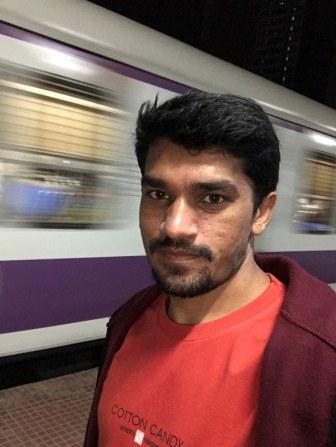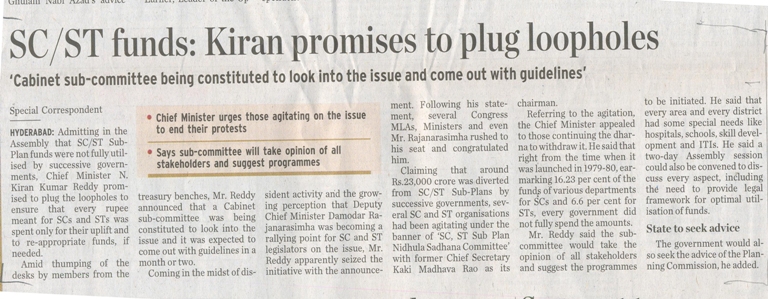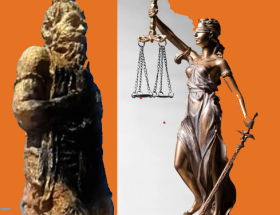Sidhodhan Umare
Abstract
The majority of village population is either small or marginal landholders, or landless. If we think from a social justice point of view, we would agree that those common lands should be distributed first among landless people, but upper caste landlords are at the forefront in grabbing common lands. They are grabbing the major chunk of village common lands, which is morally wrong because we know that agriculture is the major source of income for the rural population .This needs to be stopped because it poses a double threat to both social and environmental injustice. In the case of Jagpal Singh and Others vs. the State of Panjab and Others, the Supreme Court of India banned land entitlements from 2011 onwards in the name of ecological destruction. Then the question arises: isn’t it an ecological destruction when common lands are seized by the landlords?
Introduction
Basically, the governance related to lands in India can be classified into three main categories: land owned by private entities, government lands, and common lands. Government land includes the land owned by the central, state, and local governments; it also includes the land owned by government-related departments. In India, common lands are a subset of government lands. There is no specific definition of common lands. NSSO has defined common property resources (CPR) as lands situated within the boundary of the village and legally held by the village panchayat or community of the village, and it includes grazing lands, pastoral lands, village forests, and woodlots. The important thing to note here is that all the government lands recorded in the name of the government in the registry are common lands.
Common lands in India are the major source of natural resources for the people living in close proximity to them. These common lands are their sources of food, fuel, water, clean air, and also livelihood. As per the report published by the Foundation for Ecological Security (2020–21), 350 million people are dependent on common pool resources. Common lands in India constitute 15% of India’s total land mass. In India, there are 66 million hectares of land classified as common land, and the estimated economic value of these common lands in India is about $21–188 million annually. The people who are largely dependent on these natural resources are from the indigenous communities and minorities.
Common lands are part of every village in India, but nomenclatures are different as per the geographic locations; in Maharashtra, common lands are known as ‘Gairan’, meaning the land on which the cows and goats graze. Sometimes common lands are also known as ‘waste lands’. Waste lands are those lands that are uncultivable. But ‘Gairan’ lands can be both cultivable and uncultivable. These common lands are an ecological hotspot and thus a significant source of resources such as grazing grounds, various types of trees, plants, water, and even plain old grass. They provide some major biodiversities, which are vital for the survival of animals, and maintain the socio-environmental balance; at the same time–these lands are the only biodiverse places remaining in the villages. But each community in the village manipulates these resources in its own capacity; sometimes these common lands become a major source of livelihoods. Because of this, every community wants to utilise these common lands in some way.
The Dependence of Humans on Common Lands
There are people who are landless laborers who do not have any kind of livelihood option but to work in the fields of others to earn enough to survive. Among such landless people are Dalits who rely on common lands for various reasons. There are cattle-rearing communities who are dependent on them in order to feed their cattle and goats on these grazing grounds. Then there are artisans who rely on common lands for raw materials to make household items such as wooden beds, rope, and other items, which serve as major sources of income. Besides, there are people from various castes and communities, such as small landholders, for whom the existence or non-existence of common land has no bearing on them and they are unconcerned about it. But there are also people in the village who want these common lands to be preserved along with their trees and kept open for the use of everybody. Therefore, they are against the idea of encroachment on village common lands. Other than these people, the upper caste landlords are also encroaching on common lands because of their greed and because they believe that they have rights over any common property.
According to Jodha (1990), the reasons behind the reduction of common lands are various, but most prominent among them are a growing population, extra stress on common lands, and encroachments by humans for various purposes, including agriculture and industry. This reduction in common land is contributing to global warming because the reduction in common land means the cutting of trees, soil erosion, groundwater depletion, and the loss of overall biodiversity. In the name of development, the whole ecology and biodiversity of many places are being destroyed by the big mineral mining industries and other developmental projects. Local issues like the cutting of trees for agricultural purposes and overgrazing leading to soil erosion, drought, floods, unseasonal rain, and other issues are also responsible for the problems of global warming and climate change.
Landlessness among Dalits
According to Sukhdeo Thorat (2004), agriculture is the main source of livelihood for the rural population. The problem of landlessness is more severe among SCs than among STs; 70% of rural households in India are landless or near landless (owning less than one acre of land). The government’s track record on land redistribution has been dismal. So far, only 2% of total cultivable land has been distributed under the ceiling, and this figure rises to 10% when government land is included. Only 18 lakh acres of land have been distributed so far to 18.50 lakh SC beneficiaries, at a rate of 0.977 acres per beneficiary. A large proportion of SC households continue to have no viable land. The upper caste landlords are encroaching on the legitimately assigned lands of Dalits and tribal communities, and at the same time, the executive and judiciary are failing to provide justice to the poor and excluded groups.
According to the study conducted by Land Conflict Watch, there is a long history of land rights movement by landless Dalits in Marathwada. This movement was kick-started under the leadership of Dr. Ambedkar who had argued that land should be provided to the Dalits who are landless. Nikhil Gokhale of Land Conflict Watch, in one of his research papers, argued that the ratio of landlessness among Dalits is still very high; in 2013 the landlessness percentage among Dalits was 60% whereas 70% Dalits were farm laborers. He has also argued that the land redistribution program is a total failure as the upper castes from the states of Bihar, Madhya Pradesh and Gujarat have never ceded the control of their lands which were supposed to belong to Dalits of respective states (Gokhale, 2013).
John Rawls (1971), while talking about justice, argued that the principle of equality is very important because, when we talk about justice, we have to take care of existing inequalities. When Rawls talked about inequality, he meant the inequalities arising out of differences in the benefits and burdens attached, directly or indirectly. He has suggested that we don’t need to do away with all the inequalities, since some of them may be advantageous and we don’t need to eradicate them, but we certainly have to take care of the inequalities that are unjust and arbitrary. The eradication of these inequalities can happen with the consciousness of morality and, more than that, with the idea of fairness. Rawls has considered the principle of justice as not just moral but also fair. According to him, the notion of morality arises when it is imposed on mutually self-interested agents and circumstances. But he considered fairness the most important notion when it comes to the notion of morality in situations like those mentioned above, for example, when agents are cooperating with or competing against each other.
Conclusion
After considering the existing ground level situation and the principle of justice given by John Rawls, I believe that those who are bearing the burden of landlessness or near landlessness are struggling to survive, while those who are large landlords are enjoying the benefits of ownership. Existing inequalities between landowners and landless people must be eliminated as soon as possible. The encroachments on common lands by the land-owning communities are due to their greed, arrogance, and a casteist mindset, which need to be adjusted somewhere to maintain fairness in the distribution of natural resources for the sake of social justice. Many are saying that this social justice is coming at the cost of ecological destruction. But what happens to the ecological destruction when the upper caste landlords take over the common lands? Now whether environmental justice should come from the ban on encroachment on common lands or from stopping land regularization is a question of governance and jurisprudence. It is true that the land distribution movement has the ability and capacity to bring social and environmental justice.
~
References
- Jodha, N. S. (1990). Rural Common Property Resources: Contributions and Crisis. Economic and Political Weekly, 25(26), A65–A78. http://www.jstor.org/stable/4396434
- Rawls, J. (1958). Justice as Fairness. The Philosophical Review, 67(2), 164–194. https://doi.org/10.2307/2182612
- Sandhu. H, Zhang. W, Dick. H,Eldidi. R, (2021), International Forests Day: the crucial value of India’s common lands,International Food Policy Research Institute, Archived from-Research gate, On 12/10/2022, https://www.researchgate.net/publication/353399887
- Singh. S,(2013), Common lands made ‘Wastelands’: Making of the ‘Wastelands’ into Common lands,
- Throat, S. (2004). Marginalized Groups and the Common Minimum Program. Social Scientist, 32(7/8), 70–75. https://doi.org/10.2307/3518261
- Gokhale. Nihar, (2019) Dalit Battles for Promised Lands Rage Across India, Land Conflict Watch,
~~~
Sidhodhan Umare is a Student of MA Social Work in Dalit and Tribal Studies and Action in Tata Institute of Social Sciences, Mumbai.










